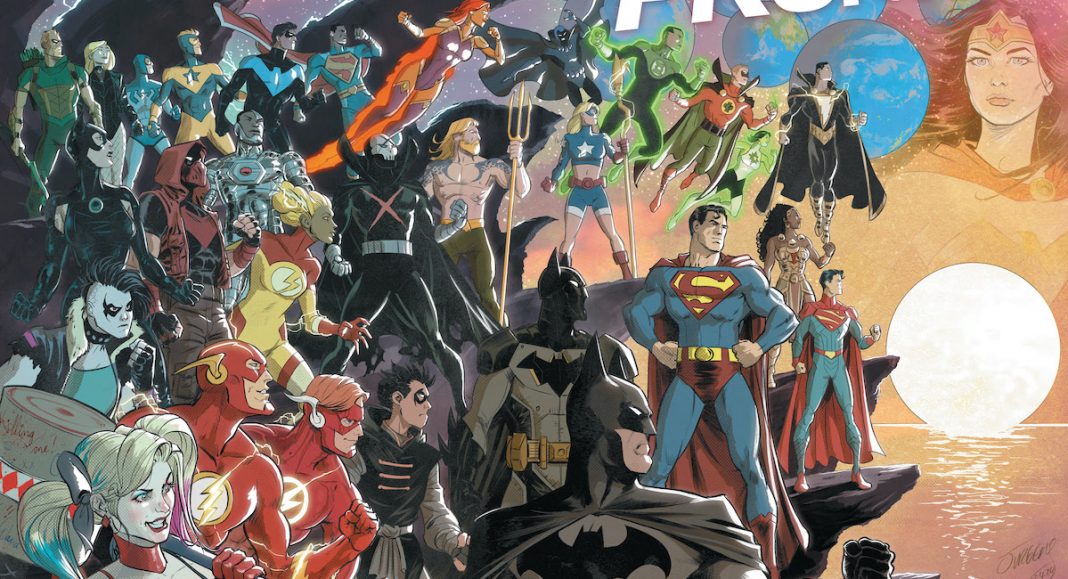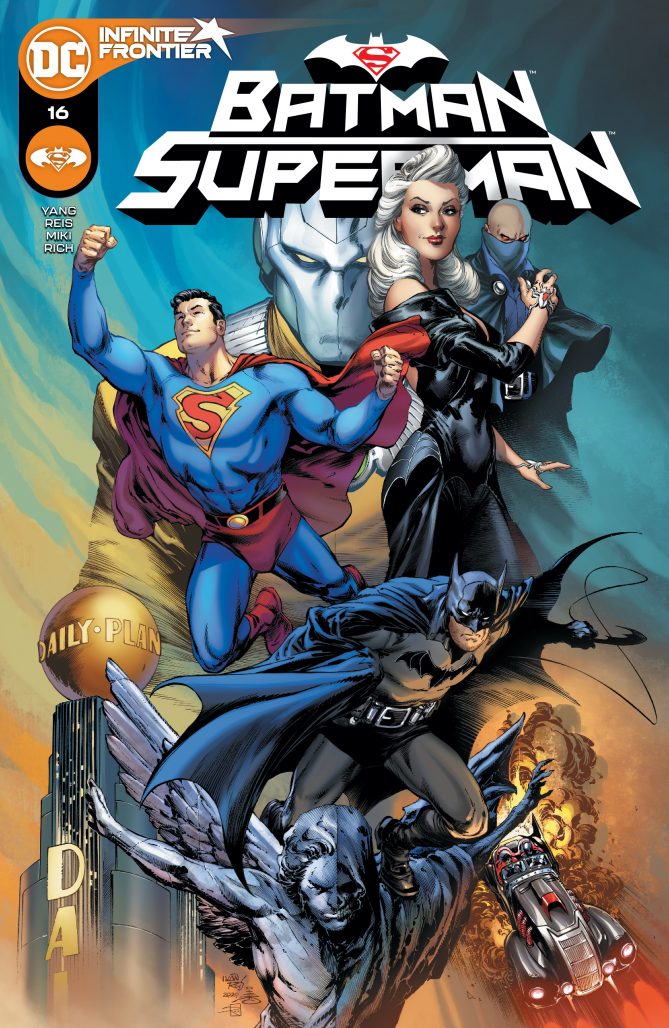Last week DC Comics announced Infinite Frontier #0, a 64-page one-shot arriving in March that will serve as a launch point for DC’s new, post-Death Metal & post-Future State status quo. The covers for DC’s main line will also bear Infinite Frontier trade dress beginning in March. The announcement came on the heels of a dozen new creative team and series reveals over the preceding weeks, many of which directly correlate to January and February’s Future State teams and titles.
With still a fair amount of uncertainty around what the future truly holds for DC Comics, here are a few observations and some light speculation based on what we learned about the Infinite Frontier initiative last week.
1. A unified continuity remains.
In an interview with THR about the Infinite Frontier one-shot, writer Joshua Williamson, who has acted as a sort of showrunner for the special, talked about the goals for the one-shot. Among those he mentioned was to show that the DC Universe is still operating under a unified continuity:
We also wanted to show that the DCU is still together, it’s still a universe that’s moving forward. We’ve got a lot of really cool, big stuff coming with that, but it’s still one big universe that is connected, and that these characters, and these stories, are still connected, telling the greatest story in comics, which is the DC Universe.
Rumors and speculation have abounded regarding the future of the DC Universe following Death Metal, with a prominent rumor being that DC would be, if not abandoning its continuity entirely, not focusing on it/being as beholden to it as they have been in the past. The publisher certainly has a history of continuity resets and events that tinker with it, and the current Death Metal series has seemed to be on a path towards a major tinkering for a few months now. Based on what Williamson said in the interview, though, it doesn’t sound like anything as drastic as an abandonment of the DCU’s shared continuity.
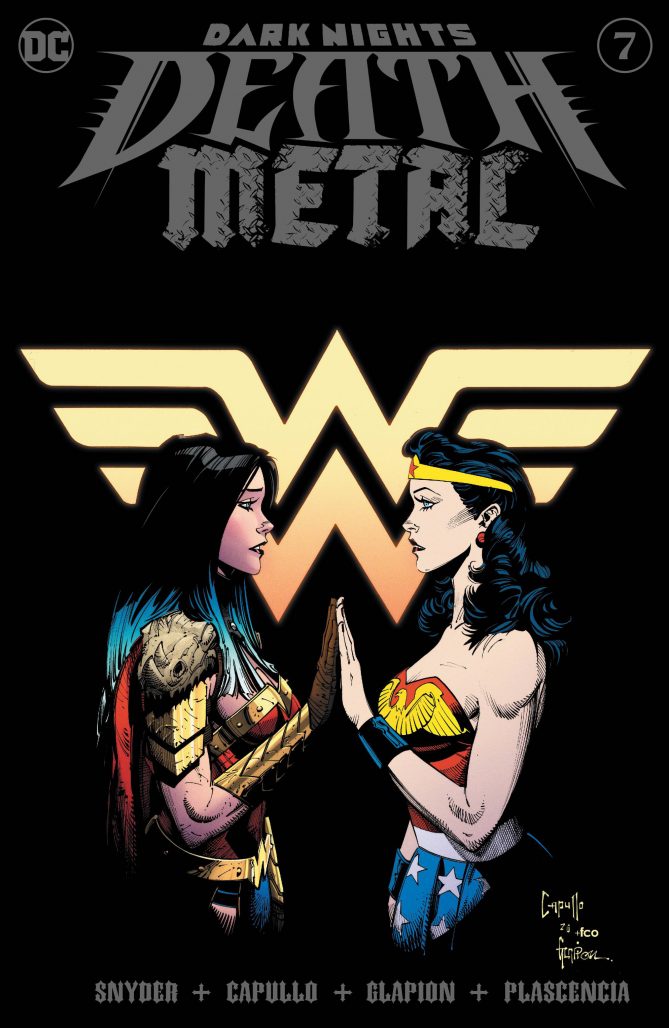
Williamson referred to Infinite Frontier as a “refresh,” which is very similar to how the DC Universe Rebirth one-shot and ensuing initiative were framed (Rebirth itself was a course-correction from The New 52 reboot of the entire DC line). He also said that the new one-shot will set up a larger story that will play out across the DCU for the next year and beyond, specifically noting that they have a plan for where things are going to go.
All of that said…
2. Everything counts.
Later in the interview Williamson dropped another interesting tidbit about what Infinite Frontier is setting up:
We want to just take all these cool pieces of info on the table and just move forward with it and say, all of these things happened, all those stories matter, and now we’re going to go to the next level with it.
If DC is still operating under a unified continuity, that statement makes it sound like it’s really unified, and that every story that happened before still happened, perhaps even if they contradict each other. Many questions that have lingered in the post-Rebirth DCU have been around how the return of story elements from pre-New 52 could mesh with the new timeline established post-Flashpoint. Here Williamson seems to indicate that the Infinite Frontier will acknowledge and possibly explain those discrepancies, without discounting one story or event over another.
Which sounds an awful lot like a concept DC put in place twenty years ago: hypertime.
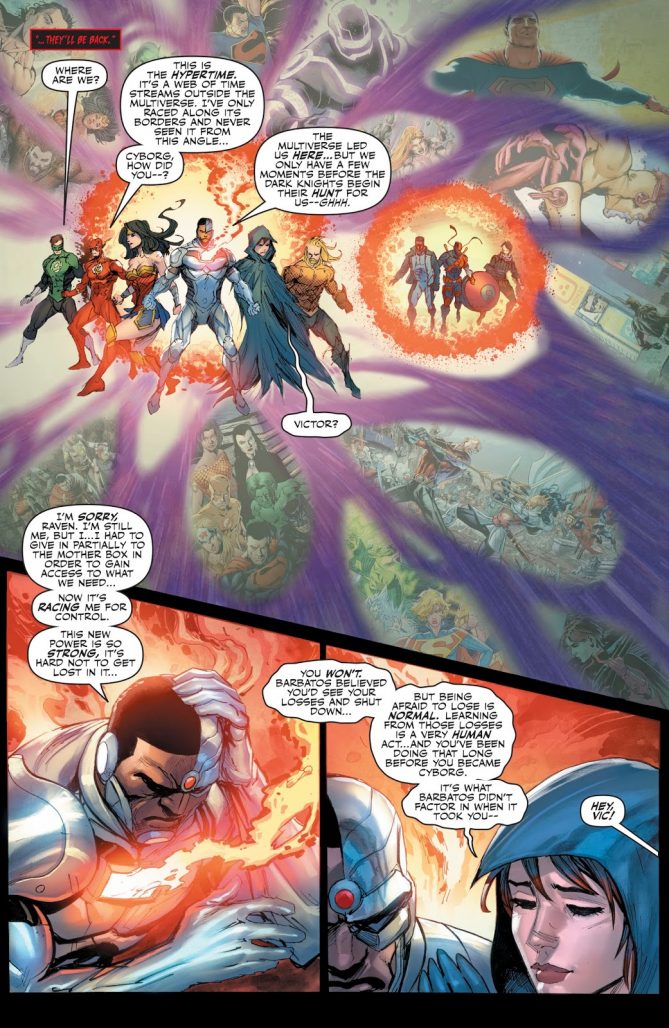
Introduced during 1999’s The Kingdom fifth-week event/semi-sequel to Kingdom Come, hypertime was developed by Mark Waid and Grant Morrison as a way of explaining away continuity errors within the DCU. All possible timelines exist within hypertime, like tributaries in a river, and those timelines are constantly diverging and merging and diverging again, endlessly unto infinity. Just a few years later the idea was disavowed by Dan Didio, but in 2017, during the conclusion of the four-part “Bats Out of Hell” storyline that tied in to the first Dark Nights: Metal event, Williamson himself briefly reintroduced the concept of hypertime to the DCU, though it hasn’t been touched on much since. Hypertime was rumored to be a key part of Didio’s now-scrapped 5G plans, though. Perhaps Infinite Frontier will incorporate other ideas from those plans, but without the definitive timeline that Didio kept plugging during interviews and convention appearances.
3. The multiverse will play a big role.
The events of Dark Nights: Death Metal have seen the destruction of the multiverse, which, as defined during the Morrison-helmed The Multiversity series, has been made up of 52 distinct worlds. It’s clear now that the multiverse will be recreated after Death Metal, but whether it will still be limited to 52 worlds is anybody’s guess. Considering the name of the initiative is Infinite Frontier and not 52 Frontiers, though, it seems likely that DC will be busting down the walls to the Orrery of Worlds and returning to an unlimited multiverse.
We know that the reformed multiverse will be playing a role during Future State. Among other things, Jess Chambers, the Flash who will be appearing in the Williamson-written Future State: Justice League series, is a resident of an alternate Earth, while the Future State: Suicide Squad series will see Amanda Waller take her team to Earth-3.
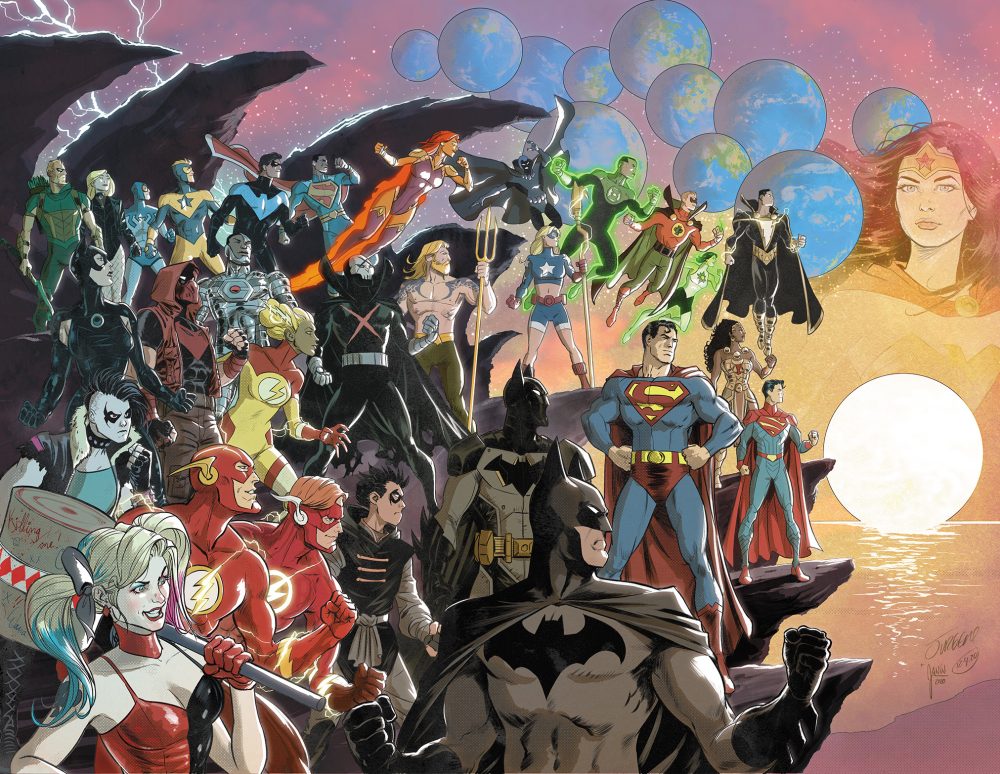
Based on the cover for Infinite Frontier #0 by Dan Jurgens and Mikel Janín, it looks like the multiverse will continue to play a large role going forward. The cover features the familiar Calvin Ellis Superman of Earth-23, and also the Earth-3 Flash analogue/speedster from the aforementioned Future State: Suicide Squad series (though she may not be from Earth-3, as a version of the character is apparently appearing in Teen Titans Academy). The cover also includes Nubia and the Tim Fox Batman, both of whom are from Future State titles, so who knows whether all of those characters existing within the same space is literal or symbolic, but it is definitely indicative that alternate Earths and timelines will be playing a big role in the DCU going forward.
Outside of the cover, one of the new series debuting in March is a miniseries featuring the origin of the new Earth-3’s Crime Syndicate, and the returning Batman/Superman series looks to be focused on alternate versions of the World’s Finest heroes. The cover for Gene Luen Yang, Ivan Reis, and Danny Miki’s first issue on Batman/Superman features what appear to be Golden Age-styled versions of the heroes. If different titles will indeed be taking place on different Earths, that’s a way for those books to chart a path forward without having to worry about what’s going on in other books while still saying that DC’s continuity is unified under the umbrella of the Multiverse.
4. Reign of the Backup Story
Back when Future State was announced one of the things that we were most looking forward to seeing was the use of the anthology format to give stories and characters that might not be able to carry their own title a chance to be told. Four of the Future State titles are anthologies, while an additional four series include backup stories. As anticipated, DC is continuing the use of both formats as part of Infinite Frontier. Of the twenty March-shipping titles in DC’s ‘main’ line — that is, titles that are part of the aforementioned shared continuity — seven of them include back-up stories, and two of them are anthologies. One of the backup stories, the Justice League Dark feature in Justice League, appears to be a replacement for that team’s previous ongoing, as does the Red Hood feature that’s included in the Batman: Urban Legends anthology series.
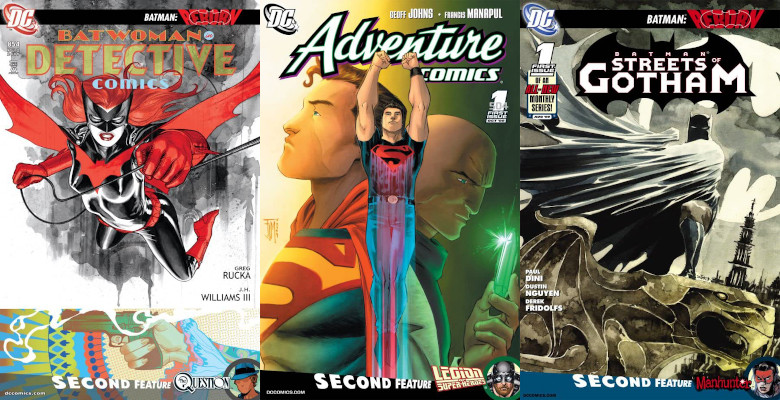
The back-up story move reminds me of a similar tactic DC used in the late ‘00s, where they implemented something called “Second Features” — basically slightly longer back-up stories that starred characters who had either previously had their own series (such as the Kate Spencer Manhunter or the Legion of Super-Heroes) or who were relatively new and potentially could have their own books (like the Renee Montoya Question). Ten of DC’s titles at the time included Second Features, which lasted a little over a year before DC reduced the number of pages per issue and eliminated the backup stories.
Regardless of what they’re called, backup features and anthology titles are a good way to build an audience for material that might not otherwise have supported its own headlining series. More importantly, they’re also a smart way to produce material that can eventually be repackaged and sold as a collected edition in the bookstore market. Of course, the backup features and anthologies are also something of a counter to the shrinking of DC’s overall ‘main’ line, but that’s something we’ll get into another time.
Ultimately, time will tell if the strategy that Infinite Frontier appears to be ushering in will pay off. There’s still much angst about DC’s future under AT&T, especially after how the past few months have gone for the publisher’s staff, and no one storytelling direction or announcement is likely to assuage any of those fears immediately. Still, if the past year has us shown nothing else, it’s that a good, well-told story is a great distraction from anxiety, and hopefully that’s what DC is able to deliver with Infinite Frontier and the rest of their 2021 plans.


